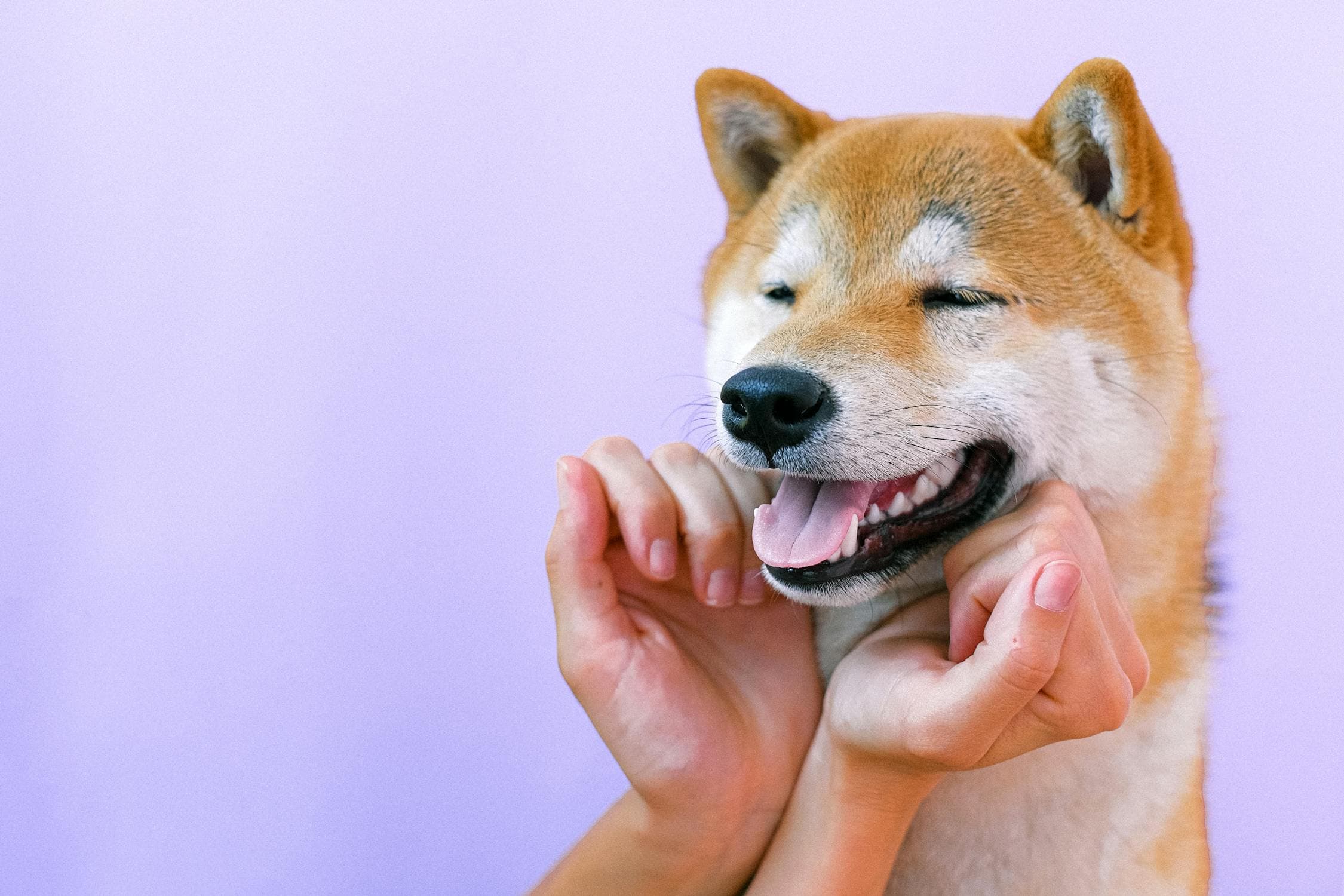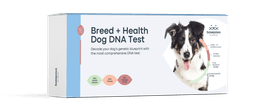Have you ever wondered if dogs can sweat? Surprisingly, many people don't think dogs sweat. Well, they do but not like humans, differently. They also rely on other mechanisms whenever they need to manage the heat. If you're a dog lover, you need to know how dogs cool themselves down during scorching summers or, in general, to maintain their body temperature.
Why Do Dogs Sweat?
Yes, this ability exists in dogs as well as in humans. Dogs pant to cool down themselves, and vasodilation helps them cool down. They don't sweat as much as humans do.
Science Behind Dogs' Sweat Glands
Can dogs sweat as much as humans do? The answer is no, but they have sweat glands that produce sweat in response to heat. These sweat glands allow them to cool rapidly after heavy physical activity or during hot weather, as humans do.
How Do Dogs Sweat Differs From Humans?
Human sweat is a primary cooling mechanism that evaporates from the skin, a process called perspiration. Unlike humans, dogs don't have vast and widespread glands, so their perspiration is minor. They usually rely more on other mechanisms to cool themselves down.
Where Do Dogs Sweat?
Dogs sweat during heat production, and their sweat glands are more active in areas where their fur is thinner. That's why dogs' sweat glands are mainly on the pads of the feet and nose. You can notice in summer that your dogs leave marks of wet feet when walking on a smooth surface.
Sweat Glands on Paw Pads and Nose
Dogs have only two types of sweat glands present.
Merocrine Glands
Merocrine sweat glands on paw pads are very similar to human sweat glands. They work to cool the animal down and make its walk wet during hot seasons.
Apocrine Glands
Apocrine sweat glands differ slightly from regular sweat glands but play a vital role. These glands help dogs identify other dogs through their scents distributed across the body. Found all over the dog's body, these glands are not involved in cooling. Instead, they play a role in scent communication.
Why don't dogs sweat through their skin?
Can dogs sweat profusely like humans? No, and they don't have a skin structure like humans. We humans sweat to cool down, but dogs have a panting mechanism to cool themselves down.
How Do Dogs Cool Themselves?
Dogs rely on panting and sweat from small sweat glands located on their nose and paw pads. All these mechanisms are to cool down and regulate the body's temperature. If dogs don't pant, they develop a tendency to have heatstroke.
Panting: A Dog's Primary Cooling Mechanism
Panting is a cooling mechanism used by many mammals, including birds and reptiles. It involves evading water from the body's internal surfaces. Whenever the temperature increases, the rate of respiration increases, too. The cooling process starts with the evaporation of water from the mouth and nasal passage. Like other forms of cooling perspiration, panting expels water in large quantities, which must be replaced if the animals are to maintain good heat regulation.
The Role of Sweat in Temperature Regulation
Sweat plays a significant role in regulating body temperature. When the dog's sweat evaporates, the body's surface naturally cools down. Another primary function is to help the gripping mechanism by slightly moistening it.
What are some other heat-release mechanisms?
Other than panting and sweating through paws, vasodilation is another mechanism. When the blood vessels in the face and ears expand slightly, this expansion helps regulate heat, allowing the cooling-down effect to occur more efficiently.
What Are Some Signs Your Dog Is Overheating?
Whenever a dog's temperature rises, you may notice blood rushing to the gums and other membranes, helping to transfer excess heat. Overheating dogs usually do frantic panting, extreme saliva from their mouth, bright red skin, and excessive breathing. This condition occurs when temperatures exceed 106 degrees Fahrenheit, and dogs cannot cool themselves through panting and vasodilation. In more severe conditions, dogs can have vomiting and diarrhea, and sometimes, when they're unable to stand, they can have seizures and die after a comatose situation.
Some Immediate Actions to Prevent Heatstroke in Dogs:
According to the PetMD, there are various ways to prevent heatstrokes in dogs.
Provide them with proper shade and keep them hydrated in the hot weather.
During hot spells, exercise your dog during the cooler parts of the day, such as mornings or evenings. Make the walks relatively shorter.
Don't leave your dogs alone in the car.
How to Keep Your Dog Cool?
There are some ways to cool animals down in extremely hot areas or during excessive heat waves. These methods can be used for almost any animal, but we will discuss dogs, strays, and pets here.
If your pet dogs are experiencing heat, you must do certain things to comfort them. Keep at least two sources of water within their reach. Provide them with cool and comfortable places to relax. We recommend making shades and placing water in different clean places for strays.
Breeds Prone to Heat Sensitivity
According to the BC SPCA, breeds like brachycephalic or flat-faced dogs usually take longer to cool themselves down by panting. These dogs include Boston terriers, French bulldogs, pugs, and shih tzus, and they have Brachycephalic airway syndrome (BAS). These breeds prone to heat sensitivity, should be kept in cool, well-ventilated environments and exercised during cooler parts of the day. Regular grooming, access to fresh water, and avoiding excessive heat exposure are essential for their well-being.
The Role of Sweat in Dog Grooming and Care
As the temperature rises, grooming plays a good part in keeping dogs cool. Regular trimming of long hairs will keep the temperature low and keep your animal fleas free with a healthy body.
Cleaning and Caring for Paw Pads
Like humans, dogs have paw pads, which need to be regularly cleaned to maintain good health. Look for injuries and check for redness or skin infections. In warm weather, try to keep them moist.
Paws are the most underestimated part of a dog, and taking care of your dog's paw pads daily is essential. Paws allow your animal to move, and when the paws are healthy, clean, and moist, dogs can walk and commute easily. Grooming includes nail trimming, paw protector, and keeping feet healthy, which is also key to regulating temperatures.
What Are the Seasonal Adjustments to Keep Your Dog Comfortable?
When you expect winter, keep your dogs cozy and make their feet crack-free using boots and balm. If you have scorching summers, keep the environment light and airy. You can also adjust their routine and eating patterns.
When Should You Consult a Vet for Your Dog?
You need to consult a vet regularly for routine checkups. Still, there could be some alarming signs, such as changes in eating habits, excessive sleep or thirst, unusual eye symptoms, and upset stomach. In these cases, you should immediately consult a doctor.
When you see excessive panting, vomiting, and diarrhea in your dogs, you can predict that it might be a heatstroke. Do not postpone it and consult your vet immediately.
Conditions Impacting a Dog's Ability to Cool Down
Dogs' normal body temperature is usually higher than humans'. Their ability to cool down is affected when they experience extreme heat and have extra physical activity.
What Is the Importance of Regular Vet Check-Ups for At-Risk Breeds?
Regular checkups allow the vets to examine the pet, perform detailed diagnostic tests, and identify the pet's health. Finding out the issues early will lead to more efficient treatments, so it's better to have detailed checkups regularly.
Frequently Asked Questions
What body part sweats in a dog's body?
There are very few body parts that sweat. It includes only the nose and paw pads.
Do dogs sweat through their paws?
Yes, they sweat through their paws. That's why they leave footprints when they walk.
Does a dog sweat like a human?
Dogs sweat, but not like humans. Humans sweat more and have large sweat glands, while dogs sweat only a little and have few.
Do dogs sweat from their paws or mouths?
Dogs sweat through their paws but not through their mouth.
Can a dog's sweat make them smelly?
There is a particular smell in their paws, which you can sense. However, their bodies are not smelly due to sweat.



